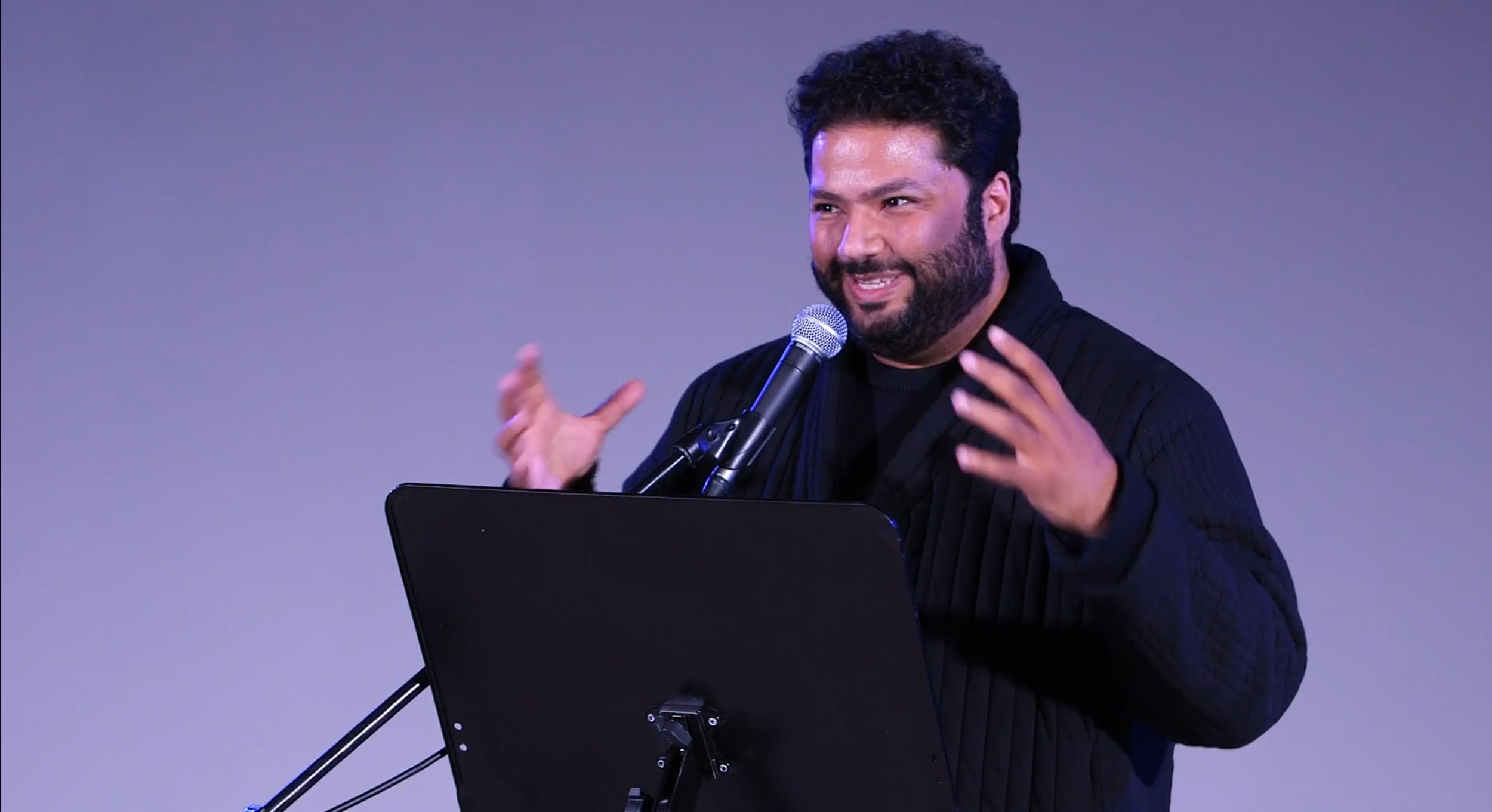4100 YEARS REVERBERATIONS WITH HALIM EL-DABH
On October 23-24, 2021, SAVVY Contemporary held a series of invocations around musician, Pan-Africanist, creative musicologist, seminal composer, and philosopher Halim El-Dabh and shared the research behind the project
HERE HISTORY BEGAN. TRACING THE RE/VERBERATIONS OF HALIM EL-DABH. The two-day-long event included lectures, talks, dance performances, poetry readings, music, and sound concerts.
Halim El-Dabh was a major influence on me while I was working on my doctoral thesis at Seoul National University. I was fortunate enough to meet him in person and to have in depth conversations over the years. My contributions to the INVOCATIONS program at SAVVY Contemporary was mainly in the form of a lecture of my doctoral research, which was entitled Reorienting Maverickism, and a performance of a piece called Variations on Brother Bushra, Brother Bushra.
Lecture: Reorienting Maverickism
Reorienting Maverickism was an idea I explored while pursuing my doctoral studies at Seoul National University between 2013 and 2018. It mainly addressed the phenomenon of celebrating ‘maverick’ composers, who are typically seen as outsider composers who ultimately had a major impact on ‘classical’ music discourse despite the initial resistance they faced in their careers. Most of those typically listed as maverick composers tend to be white, male American composers who had a background in the European tradition of classical music. I was mostly interested in looking at the absence of a more diverse representation in the histories of twentieth and twenty-first century music. One of the figures I focused on in my research was Halim El-Dabh.
My doctoral thesis is available for digital download here.
Sound Performance: Variations on Brother Bushra, Brother Bushra
One of my strongest impressions from my first meeting with Halim El-Dabh was how animated he got whenever he mentioned his older brother, Bushra. Bushra, it turns out, was part of a young group of Egyptian intellectuals that included Naguib Mahfouz. Bushra had a major impact on Halim, even taking him to the fabled 1932 Arab Music Conference in Cairo.
In the process of thinking of creating a performance that would somehow receive the approval of El-Dabh, I tried to search for traces of Bushra online. To my surprise, I found a number of articles that he had published in the 1930s in a Cairene publication called Al-Majalla Al-Jadeeda (or ‘The New Journal’). All of the writings by Bushra El-Dabh were discussions on philosophy and society. One of his texts, however, read like a theatrical play. That text, “Aho Al-Hub” (which, in th Egyptian-Arabic vernacular translates to, “This is Love”), is a meditation on whether the role of a young intellectual is to devote themselves to their knowledge and interests, or whether it was acceptable for them to also do things such as falling in love. I was also interested in Halim’s talks on frequencies and reverberations, which led me to using the Faster-Fourier Transformation process to create sine waves extracted from slowed-down improvisations I made on the Oud, slowed down to create hovering, droning frequencies. I also recorded my own voice reading parts of Bushra’s text. The result was an on-the-fly playback of my voice reading the text mixed with those extrapolated frequencies of my oud.

